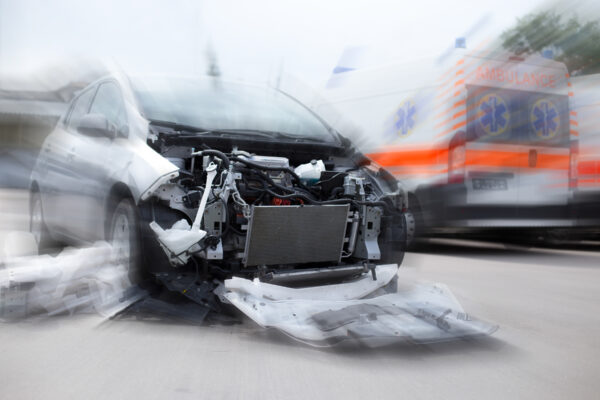In the hustle and bustle of Erie County’s streets, car accidents are an unfortunate reality that can cause immense physical, emotional, and financial distress. When such accidents occur, it’s essential to understand the legal concept of negligence and how it impacts the outcome of a car accident case. At Andrews, Bernstein & Maranto, PLLC, we are committed to helping our clients navigate the complexities of negligence claims in car accident cases. In this article, we’ll delve into the intricacies of negligence, its requirements, and its crucial role in seeking justice for car accident victims.
Understanding Negligence in Car Accident Cases
Negligence, in the legal context, refers to the failure to exercise the level of care that a reasonably prudent person would under similar circumstances. In the realm of car accidents, negligence comes into play when a driver’s careless or reckless behavior leads to an accident and subsequently causes harm to others. Proving negligence is a cornerstone of seeking compensation for injuries sustained in a car accident.
Elements of Negligence
For a successful negligence claim, certain elements must be established:
- Duty of Care: The first element involves proving that the defendant (the at-fault driver) owed a duty of care to the plaintiff (the injured party). This duty of care is the legal obligation to act responsibly and safely while operating a vehicle.
- Breach of Duty: Once the duty of care is established, the next step is to demonstrate that the defendant breached this duty through their actions or inactions. This breach could be anything from speeding or running a red light to texting while driving.
- Causation: It must be proven that the defendant’s breach of duty was the direct cause of the accident and subsequent injuries. In other words, had the defendant acted responsibly, the accident would not have occurred.
- Damages: Finally, to complete the negligence claim, the plaintiff needs to provide evidence of the damages they suffered as a result of the accident. These damages can include medical expenses, property damage, lost wages, and pain and suffering.
Comparative Negligence in New York
It’s important to note that New York follows a comparative negligence system. This means that even if the plaintiff was partially at fault for the accident, they can still recover damages, albeit reduced by the percentage of their own negligence. For example, if the plaintiff is found to be 20% at fault, their potential compensation would be reduced by 20%.
Gathering Evidence for a Negligence Claim
A crucial aspect of building a strong negligence case in car accident scenarios is collecting compelling evidence. This evidence can include:
- Police Reports: These official documents provide an objective account of the accident and can help establish fault.
- Eyewitness Testimonies: Statements from individuals who witnessed the accident can provide valuable insight into the events leading up to the crash.
- Photographs and Videos: Visual evidence of the accident scene, vehicle damage, and road conditions can provide a clearer picture of how the accident occurred.
- Medical Records: Comprehensive medical records showcase the extent of injuries sustained and the medical treatment required.
- Expert Opinions: Accident reconstruction experts can provide professional opinions on the mechanics of the accident, helping to establish fault.
The Emotional Toll of Car Accidents
Beyond the physical and financial repercussions, car accidents often inflict a heavy emotional toll on the victims. The aftermath of a collision can leave individuals traumatized, anxious, and even suffering from post-traumatic stress disorder (PTSD). The suddenness of an accident, the sound of screeching tires, and the impact can all contribute to psychological distress that may last long after physical wounds have healed.
In many cases, victims might find themselves struggling with anxiety related to driving or even being passengers in vehicles. The flashbacks and nightmares common in PTSD can lead to an aversion to vehicles or driving altogether. Moreover, the emotional trauma can affect daily life, relationships, and overall mental well-being.
Road to Recovery
Recovering from a car accident involves not only physical healing but also addressing emotional scars. Seeking medical attention immediately after an accident is crucial, even if injuries seem minor, as some symptoms might not be immediately apparent. Additionally, consulting mental health professionals is just as important to address any emotional trauma.
Support networks, including family, friends, and support groups, can play a pivotal role in the recovery process. Sharing experiences and feelings with others who have been through similar situations can provide comfort and a sense of belonging. It’s essential to be patient with yourself during the healing journey, both physically and emotionally.
Navigating the intricacies of negligence claims in car accident cases can be overwhelming, especially when dealing with injuries and emotional distress. This is where the experienced team at Andrews, Bernstein & Maranto, PLLC, comes in. Our dedicated attorneys understand the nuances of negligence law in Erie County and are committed to advocating for your rights.
In the aftermath of a car accident, understanding the role of negligence is essential in seeking the compensation you deserve. Proving negligence involves demonstrating that the at-fault driver breached their duty of care, directly causing the accident and subsequent damages. With years of experience in handling car accident cases, Andrews, Bernstein & Maranto, PLLC, is ready to guide you through the legal process, ensuring your rights are protected and your case is built on a solid foundation.
If you or a loved one have been involved in a car accident, don’t hesitate to contact us. Our skilled attorneys are here to provide the support and expertise needed to navigate the complexities of negligence claims and fight for the compensation you rightfully deserve. Your road to justice starts with a simple step – reaching out to Andrews, Bernstein & Maranto, PLLC.
